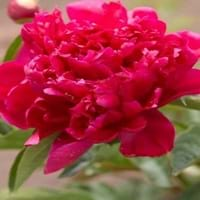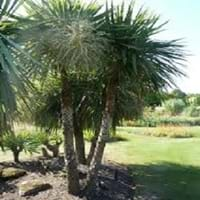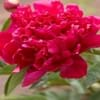Life Span
Perennial
Perennial
Type
Perennial
Broadleaf Evergreen
Origin
Hybrid origin
New Zealand
Types
Aristocrat, Buckeye Belle, Henry Bockstoce , Abalone Pearl, Coral Supreme, Cytherea, Charlie's White
Not Available
Number of Varieties
Not Available
Habitat
Hillside, Woods
Coastal Regions
USDA Hardiness Zone
Not Available
8-11
AHS Heat Zone
8-1
Not Available
Sunset Zone
Not Available
21,22
Habit
Clump-Forming
Upright/Erect
Flower Color
Not Available
White
Flower Color Modifier
Bicolor
Bicolor
Fruit Color
Not Available
White, Blue
Leaf Color in Spring
Not Available
Burgundy, Dark Red, Copper
Leaf Color in Summer
Not Available
Burgundy, Dark Red, Copper
Leaf Color in Fall
Not Available
Burgundy, Dark Red, Copper
Leaf Color in Winter
Light Green
Burgundy, Dark Red, Copper
Leaf Shape
Compound
Long Narrow
Plant Season
Spring, Summer
Spring, Summer, Fall, Winter
Sunlight
Full Sun, Partial Sun, Partial shade
Full Sun, Partial Sun, Partial shade
Type of Soil
Clay, Loam
Loam, Sand
The pH of Soil
Acidic, Neutral, Alkaline
Neutral, Alkaline
Soil Drainage
Average
Well drained
Bloom Time
Not Available
Late Spring, Early Summer, Summer
Tolerances
Drought
Drought, Salt
Where to Plant?
Ground, Pot
Ground
How to Plant?
Grafting, Seedlings, Stem Planting, Transplanting
Stem Planting, Transplanting
Plant Maintenance
Medium
Medium
Watering Requirements
Does not require lot of watering, It cannot sustain wet-feet, Keep the ground moist but not water-logged, Needs watering once a week, Prefer drip-irrigation instead of Over-head watering, Water occasionally
Average Water Needs
In Summer
Lots of watering
Lots of watering
In Spring
Moderate
Moderate
In Winter
Average Water
Average Water
Soil pH
Acidic, Neutral, Alkaline
Neutral, Alkaline
Soil Type
Clay, Loam
Loam, Sand
Soil Drainage Capacity
Average
Well drained
Sun Exposure
Full Sun, Partial Sun, Partial shade
Full Sun, Partial Sun, Partial shade
Pruning
Do not prune during shooting season, Prune to control growth, Remove dead or diseased plant parts, Remove deadheads
Prune if you want to improve plant shape, Remove damaged leaves, Remove dead leaves
Fertilizers
All-Purpose Liquid Fertilizer
All-Purpose Liquid Fertilizer
Pests and Diseases
Botrytis Blight, Leaf spot, Stem spot, Viruses
Red blotch
Plant Tolerance
Drought
Drought
Flowers
Yes
Insignificant
Flower Petal Number
Not Available
Single
Foliage Texture
Not Available
Coarse
Foliage Sheen
Not Available
Not Available
Attracts
Ants
Caterpillar, Moths
Allergy
Not Available
Asthma
Aesthetic Uses
Beautification, Bouquets, Showy Purposes, Used for decorating walls, fences, gates, hedges, etc.
Beautification, Landscape Designing, Showy Purposes
Beauty Benefits
Not Available
Not Available
Environmental Uses
Air purification
Air purification
Medicinal Uses
Cough, Gout, Headache, Heartburn, Kidney problems, Upset stomach, Urinary tract problems
Diabetes, Dysentry, Stomach pain
Part of Plant Used
Flowers, Root, Seeds
Leaves, Root, Stem
Other Uses
Showy Purposes, Used as Ornamental plant, Used for fragrance
Decoration Purposes, Employed in herbal medicine, Showy Purposes, Used As Food, Used as Ornamental plant
Used As Indoor Plant
No
No
Used As Outdoor Plant
Yes
Yes
Garden Design
Cutflower, Feature Plant, Foundation, Mixed Border
Container, Feature Plant, Foundation, Houseplant, Screening, Wind Break, Tropical
Botanical Name
PAEONIA 'Rachel'
CORDYLINE australis 'Red Star'
Common Name
Intersectional Peony
Cabbage Palm
In Hindi
Intersectional Peony
गोभी पेड़
In German
Intersectional Pfingstrose
Cabbage tree
In French
intersectionnelle Pivoine
arbre de chou
In Spanish
interseccional Peony
árbol de la col
In Greek
διατομεακές Παιώνια
λάχανο δέντρο
In Portuguese
interseccional Peony
repolho árvore
In Polish
międzysegmentowe Piwonia
kapusta drzewo
In Latin
Intersectional AGLAOPHOTIS
brassica ligno
Phylum
Tracheophyta
Magnoliophyta
Class
Magnoliopsida
Liliopsida
Order
Saxifragales
Asparagales
Family
Paeoniaceae
Asparagaceae
Clade
Angiosperms, Core eudicots, Eudicots
Angiosperms, Monocots
Tribe
Not Available
Not Available
Subfamily
Not Available
Lomandroideae
Season and Care of Intersectional Peony and Cabbage Tree
Season and care of Intersectional Peony and Cabbage Tree is important to know. While considering everything about Intersectional Peony and Cabbage Tree Care, growing season is an essential factor. Intersectional Peony season is Spring and Summer and Cabbage Tree season is Spring and Summer. The type of soil for Intersectional Peony is Clay, Loam and for Cabbage Tree is Loam, Sand while the PH of soil for Intersectional Peony is Acidic, Neutral, Alkaline and for Cabbage Tree is Neutral, Alkaline.
Intersectional Peony and Cabbage Tree Physical Information
Intersectional Peony and Cabbage Tree physical information is very important for comparison. Intersectional Peony height is 71.10 cm and width 60.00 cm whereas Cabbage Tree height is 610.00 cm and width 240.00 cm. The color specification of Intersectional Peony and Cabbage Tree are as follows:
Intersectional Peony flower color: Not Available
Intersectional Peony leaf color: Not Available
Cabbage Tree flower color: White
- Cabbage Tree leaf color: Burgundy, Dark Red and Copper
Care of Intersectional Peony and Cabbage Tree
Care of Intersectional Peony and Cabbage Tree include pruning, fertilizers, watering etc. Intersectional Peony pruning is done Do not prune during shooting season, Prune to control growth, Remove dead or diseased plant parts and Remove deadheads and Cabbage Tree pruning is done Prune if you want to improve plant shape, Remove damaged leaves and Remove dead leaves. In summer Intersectional Peony needs Lots of watering and in winter, it needs Average Water. Whereas, in summer Cabbage Tree needs Lots of watering and in winter, it needs Average Water.





